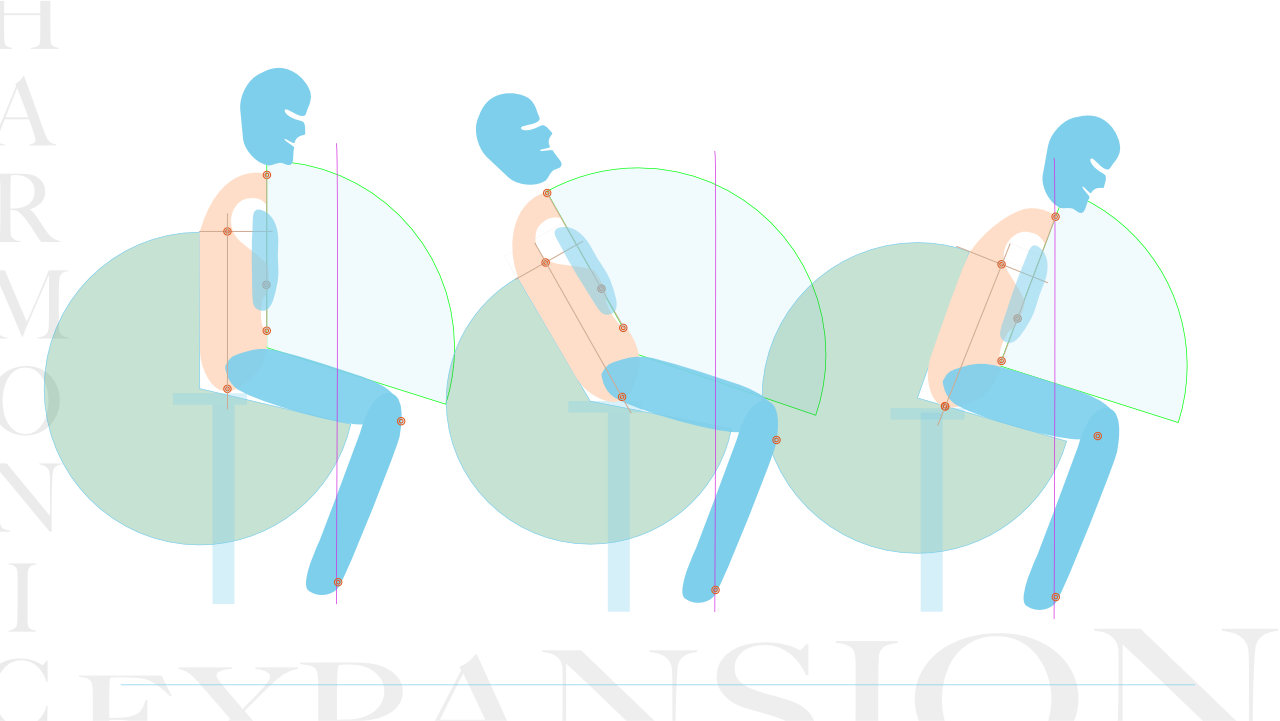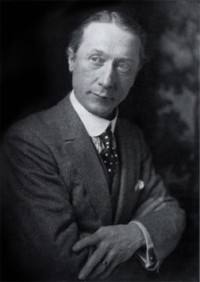A question of Conception in our practice of Leaning back or forward with the whole torso: Expanding the torso consciously to the best advantage in the general use of the mechanisms
“Now the narrowing and arching of the back already referred to are exactly opposite to what is required by nature, and to that which is obtained in re-education, co-ordination, and re-adjustment, viz., widening of the back and a more normal and extended position of the spine. Moreover, if these conditions of the back be first secured, the NECK and arms will no longer be stiffened, and the other faults will be eradicated. (Alexander, F.M., msi, «*Notes and Instances*», p. 166)
This workshop is about working on oneself1 with conscious guidance and control. Conscious control of the widening of the back and of a more normal and extended position of the spine in all gestures will be performed using video motion analysis with the consent of the participants.
1. Forming a conception of the gesture: the mechanical advantage in leaning forward or back
This workshop will be particularly dedicated to realizing how we can consciously organize coordinated movements of the different parts of the torso by reasoning with mental objects which are impossible to feel (but which can be easily conceived using speech). In particular we will work with the “line of Unity” and the “line of Wholeness“, two of Delsarte’s tools of the mind. After working with these reasoned means to guide and control our gestures, we will question whether Alexander may have been taught to use such reasoned tools to change his own use.
This workshop will explore in depth how we can use our reasoning2 to form a cause and effect conception3 and employ it to self-regulate our coordination in a physical activity, i.e., we will “study the means of placing the body [torso parts] in a position of mechanical advantage, when the work will naturally devolve on those muscles intended to carry it out, and the neck will be relaxed unconsciously”.4
2. Conscious guidance of the series of movements required to lean forward or back
To lean forward and back with the whole torso, the latter being the only “position of mechanical advantage”5 that Alexander described explicitly in his books, we will experiment with directing our coordination of movements of the different parts of the torso with a series of concerted verbal orders, experimenting whether our mind, when rationally directed,6 will effect the desired coordination.
- orders of definite performance, i.e., decisions to give consent to definite directions of movement of parts to organize a series of coordinated movements of all the parts of the torso and limb,
- orders of definite inhibition, instructions to refuse to give consent to subconscious decisions of movement which feel “right” but are wrong for the purpose of lengthening and widening the back in perfect equilibrium.
We will particularly observe and describe the defects7 in the use indicated and study how we can refuse to give consent to the guiding sensations controlling these habitual movements of all the different parts of the mechanism of the torso (“stop doing the wrong thing”).8 In refusing to reproduce these motion defects we will explore the lifting effects9 of the newly created antagonistic pulls.
This workshop is based a) on the teachings of F.M. Alexander’s books, among others “leaning forward with the torso“, CCCI, p. 110 and, “maintaining equilibrium and general control without undue strain and interference with the proper position of the torso“, MSI, p. 145 (the study of these passages is not a prerequisite to participating in the workshop) and b) on the procedure presented in this pictures.
Footnotes
- The participants will not be touched or manipulated as the workshop is about working on oneself with conscious (non-sensory) guidance.
- “The first step in re-education is that of establishing in the pupil’s mind the connection which exists between cause and effect in every function of the human body. (Alexander, F., M., “Man’s supreme inheritance”, 1910, Charterson Ltd, Methuen & Co., p. 141.).
- “It is only by having a clear conception of what is required for the successful performance of a certain stroke or other act, combined with a knowledge of the psycho-physical means whereby those requirements can be met, that there is any reasonable possibility of their attaining sureness and confidence during performance. (Alexander, F.M.; “Constructive Conscious Control of the Individual”, “*Uncontrolled Emotions, and Fixed Prejudices*”, p. 133).
- “The desire to stiffen the neck muscles should be inhibited as a preliminary (which is not the same thing at all as a direct order to relax the muscles themselves), and then the true uses of the muscular mechanism, i.e., the means of placing the body [torso] in a position of mechanical advantage, must be studied, when the work will naturally devolve on those muscles intended to carry it out, and the NECK will be RELAXED UNCONSCIOUSLY [emphasis is mine]. (Alexander, F.M., “Man’s supreme inheritance”, Chaterson Ltd 1910, reprinted 1946, p. 58).
- “The position of mechanical advantage, which may or may not be a normal position, is the position which gives the teacher the opportunity to bring about quickly with his own hands a co-ordinated condition in the subject. Such co-ordination gives to the pupil an experience of the proper use of a part or parts, in the imperfect use of which may be found the primary cause of the defects present. (Alexander, F.M.; Man’s Supreme Inheritance (Third Ed., 1946), p. 115).
- “I explain to him that his own will (not mine or some higher will), directed in a rational way to bring about a physical manifestation and aided by a simple mechanical principle and proper [mental] manipulation, is to effect the change and thus build a reasoned, real and permanent, not a spurious hysterical confidence which is apt to fail as suddenly as it arose. (Alexander, F.M., “Conscious Control, In relation to human evolution in civilization”, 1912, p. 30).
- “Therefore before he attempts any form of physical development he must discover, or find some one who can discover for him, what his defects are in the uses indicated. When this has been done he must proceed to inhibit the guiding sensations which cause him to use the mechanism imperfectly; he must apprehend the position of mechanical advantage, and then by using the new correct guiding sensations or orders, he will be able to bring about the proper use of his muscular mechanism with perfect ease. (Alexander, F.M.; Man’s Supreme Inheritance (Third Ed., 1946), p. 58).
- “The idea, however, of ceasing to do the wrong thing (as a preliminary measure in re-education) makes little or no appeal at first to the average pupil, who, in most cases, goes on trying to “be right” in spite of his experience and of all that his teacher may say.
- “When you move [the torso forward] you are putting the muscles of the back out of gear, whereas if the head goes forward and up and you move your back back, you are widening your back and bringing the antagonistic pulls of the back into play —the lifter muscles, properly called the anti-gravity muscles. In other words, you must be doing the very thing which you feel will not get you out of the chair. [Alexander notes the points in common with the method of teaching golf mentioned earlier]. (Alexander, F.M.; 1934, in Fischer, J.M.O; Articles and Lectures, 1995, p. 188, St Dunstan Lecture).



Hello Jeando,
I am very interested in reading more about Delsartes line of unity and line of wholeness, are you able to supply any leads? Google only refers me to your pages.
Kind regards
Jon
Hi Jon, there are very few texts in English which describe the geometric objects of reference that were used in the Delsarte System to guide consciously the movements of the different parts of the torso. The reason is certainly because Delsarte himself decided to stop teaching the gestural training that was part of his system long before his fame had reached abroad. There is one book that you will find on the internet which clearly states the two lines, but the understanding of the authors is incorrect regarding one of them from my point of view: Harwood, Eliza Josephine., and Ralph Bernard Wagner. How to Train Your Body. Boston: W.H. Baker company, 1934. //catalog.hathitrust.org/Record/001731944.